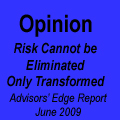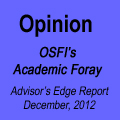Assiduous Readers will be familiar with Banks Subordinated Debt, but perhaps not so much with the difference betwee Tier 2A and Tier 2B Capital.
2.2.1. Hybrid capital instruments (Tier 2A)
Hybrid capital includes instruments that are essentially permanent in nature and that have certain characteristics of both equity and debt, including:
• Cumulative perpetual preferred shares
• Qualifying 99-year debentures
• Qualifying non-controlling interests arising on consolidation from tier 2 hybrid capital instruments
• General allowances (see section 2.2.2.)
Hybrid capital instruments must, at a minimum, have the following characteristics:
• unsecured, subordinated and fully paid up
• not redeemable at the initiative of the holder
• may be redeemable by the issuer after an initial term of five years with the prior consent of the Superintendent
• available to participate in losses without triggering a cessation of ongoing operations or the start of insolvency proceedings
• allow service obligations to be deferred (as with cumulative preferred shares) where the profitability of the institution would not support payment
Limited life instruments (Tier 2B)
Limited life instruments are not permanent and include:
• limited life redeemable preferred shares
• qualifying capital instruments issued in conjunction with a repackaging arrangement
• other debentures and subordinated debt
• qualifying non-controlling interests arising on consolidation from tier 2 limited life instruments
…
Limited life capital instruments must, at a minimum, have the following characteristics:
• subordination to deposit obligations and other senior creditors
• an initial minimum term greater than, or equal to, five years
Limits defined by the OSFI are:
The following limitations will apply to capital elements after the specified deductions and adjustments:
• A strongly capitalized institution should not have innovative instruments and non-cumulative perpetual preferred shares that, in aggregate, exceed 25% of net tier 1 capital.
• Innovative instruments shall not, at the time of issuance, comprise more than 15% of net tier 1 capital. If at any time this limit is breached, the institution must immediately notify OSFI and provide an acceptable plan showing how the institution proposes to quickly eliminate the excess.
• The amount of capital, net of amortization, included in tier 2 and used to meet credit and operational risk capital requirements shall not exceed 100% of net tier 1 capital.
• Limited life instruments, net of amortization, included in tier 2B capital shall not exceed a maximum of 50% of net tier 1 capital.
• Tier 2 and tier 3 capital used to meet the market risk capital requirements must not – in total – exceed 200% of the net tier 1 capital used to meet the market risk capital requirements.
• Tier 2 and tier 3 capital cannot – in total – normally exceed 100% of the institution’s net tier 1 capital. This limit cannot be exceeded without OSFI’s express permission, which will only normally be granted where an institution engages mainly in business that is subject to the market risk capital charge.
As has been noted, the limit on non-common-equity elements of Tier 1 Capital has been raised to 30%.
Update, 2008-2-12: I also note the OSFI July, 2007, Advisory (an “FRE” is a “Federally Regulated Entity”):
The maximum amount of innovative instruments that a FRE can have outstanding is being increased to 20% of net Tier 1 capital. A maximum of 15% of net Tier 1 can be included in the innovative Tier 1 category with the balance, a maximum of 5% of net Tier 1 eligible for inclusion in Tier 2B. Any portion of the innovative Tier 1 instruments permissible within Tier 2B can thereafter be transferred to the innovative Tier 1 category as room becomes available.
In addition, and without limiting the application of the preceding paragraph, subordinated debt issued by Non-Consolidated Financing Entities will be eligible for inclusion in Tier 2B capital provided the conditions set out in Section 5 of this Advisory are met. The sum of this subordinated debt and innovative Tier 1 instruments included in Tier 2B capital of the FRE must not exceed the greater of 5% of net Tier 1 of the FRE or the dollar amount obtained when the 5% limit is calculated at its ultimate controlling FRE (the “innovative overflow”). Any portion of the “innovative overflow” composed of subordinated debt issued by Non-Consolidated Financing Entities permissible within Tier 2B cannot, at any time, be transferred to the innovative Tier 1 category.
Tier 2B capital in aggregate will continue to be limited to 50% of net Tier 1 capital. OSFI’s Interim Appendix to Guideline A-2 (Banks/T&L/Life) states that “[a] strongly capitalized FRE should not have innovative instruments and perpetual non-cumulative preferred shares that, in aggregate, exceed 25% of its net Tier 1 capital.” FREs need not include the amounts of innovative Tier 1 instruments that are included in Tier 2B, in the calculation of the 25% limitation on preferred shares and innovative instruments in Tier 1.
If, at any time after issuance, a FRE’s ratio of innovative instruments (included in a FRE’s innovative Tier 1 category) to net Tier 1 capital exceeds 15%, and/or if the “innovative overflow” exceeds the allowable level as described above, the FRE must immediately notify OSFI. The FRE must also provide a plan, acceptable to OSFI, showing how the FRE proposes to eliminate the excess (or excesses if it breaches both limits) as soon as possible. A FRE will generally be permitted to continue to include such excess(es) in the respective category(ies) until such time as the excess(es) is (are) eliminated in accordance with its plan.









































































































